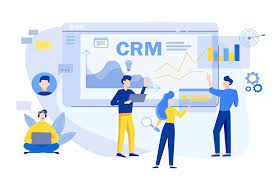Integrating the CRM system with marketing automation systems can bring several benefits to a bank. Here are some examples of how this integration can enhance marketing efforts:
- Personalized Marketing Campaigns: By integrating the CRM system with marketing automation, banks can leverage customer data to create highly personalized marketing campaigns. The CRM system provides insights into customer preferences, behavior, and transaction history, allowing banks to segment their customer base and deliver targeted messages. Personalized campaigns foster customer engagement, increase response rates, and improve the overall effectiveness of marketing initiatives.
- Lead Generation and Nurturing: The integration between CRM and marketing automation enables seamless lead generation and nurturing processes. When a prospect expresses interest by filling out a form or interacting with the bank’s website, the data can flow from the marketing automation system to the CRM system, creating a new lead. The CRM system then tracks and manages the lead’s journey, allowing marketers to nurture them with relevant content, personalized emails, and targeted offers. This integration streamlines lead management and helps convert prospects into customers more effectively.
- Automated Campaign Workflows: Integrating CRM with marketing automation systems enables the creation of automated campaign workflows. Banks can define specific triggers and actions based on customer behavior or predefined criteria. For example, if a customer opens a savings account, an automated workflow can be triggered to send a welcome email, followed by a series of educational content and cross-selling offers. These automated workflows save time, ensure consistent messaging, and provide customers with a seamless and personalized experience.
- Improved Lead Scoring and Qualification: The integration allows for the synchronization of lead data between the CRM and marketing automation systems. As leads engage with marketing campaigns and interact with the bank’s digital channels, their activities can be tracked and scored based on predefined criteria. The CRM system receives this data, enabling sales teams to prioritize leads based on their engagement levels and readiness to convert. This integration enhances lead qualification, improves sales efficiency, and increases the likelihood of converting qualified leads into customers.
- Closed-Loop Reporting and ROI Analysis: Integrating CRM with marketing automation systems enables closed-loop reporting, which tracks the complete customer journey from initial lead generation to final conversion. Data on marketing campaigns, leads, and customer interactions can flow seamlessly between the systems, allowing banks to measure the impact of marketing efforts, calculate return on investment (ROI), and make data-driven decisions to optimize marketing strategies.
- Customer Retention and Cross-Selling: By integrating CRM with marketing automation, banks can focus on customer retention and cross-selling opportunities. The CRM system provides insights into existing customers’ behavior, preferences, and needs, allowing marketers to create targeted campaigns to upsell or cross-sell relevant products or services. This integration helps banks build stronger customer relationships, increase customer loyalty, and maximize revenue from existing customer base.
The integration between CRM and marketing automation systems empowers banks to deliver personalized, targeted marketing campaigns, streamline lead management, and improve overall marketing effectiveness. It enables banks to nurture leads, retain customers, and drive revenue growth by leveraging data-driven insights and automation capabilities.
SHARE
